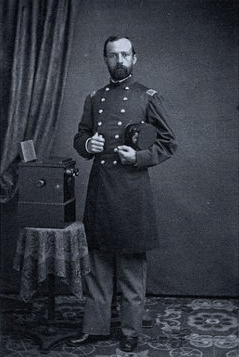William Crooks (colonel) facts for kids
Quick facts for kids
Colonel
William Crooks
|
|
|---|---|
 |
|
| Born | June 20, 1832 New York City, New York |
| Died | December 17, 1907 (aged 75) Portland, Oregon |
| Buried |
Oakland Cemetery, Saint Paul, MN
|
| Allegiance | Union |
| Years of service | August 1862 – October 1864 |
| Rank | |
| Commands held | 6th Minnesota Infantry |
| Battles/wars | Battle of Birch Coulee |
| Spouse(s) | Arabella Crooks, Harriet Marie Crooks |
| Children | 4 |
| Member of the Minnesota Senate from the 23rd district |
|
| In office January 4, 1881 – January 1, 1883 |
|
| Preceded by | John H. Reaney |
| Member of the Minnesota House of Representatives from the 23rd district |
|
| In office January 5, 1875 – January 7, 1878 |
|
| Preceded by | Henry Meyerding |
| Succeeded by | John H. Reaney |
| Personal details | |
| Residence | Saint Paul, Minnesota |
William "Billy" Crooks (June 20, 1832 – December 17, 1907) was an important person in American history. He was a Colonel during the American Civil War and a skilled railroad builder. He also served in the Minnesota House of Representatives.
Crooks graduated from the U.S. Military Academy. He led the 6th Regiment Minnesota Volunteer Infantry from 1862 to 1864. He is famous for building the first railroad line in Minnesota, called the St. Paul & Pacific. He even named his first locomotive after himself, the William Crooks. This train started running in 1861. Later, this locomotive became the first train for the Great Northern Railroad, founded by James J. Hill.
Contents
William Crooks' Early Life & Career
William Crooks was one of nine children. His father, Ramsay Crooks, was a very important person in the North American fur trade. He worked with John Jacob Astor at the American Fur Company. William's mother, Emilie Pratte, also came from a family involved in the fur trade.
When William was seventeen, he went to West Point, a famous military school. He studied to become a Civil Engineer and graduated in 1854. After school, William started his career as an engineer for different railroads. He worked for the Morris & Essex Road and the Michigan Southern & Northern Indiana. He also worked on the New York State Canal.
From 1859 to 1862, Crooks was the chief engineer for the St. Paul & Pacific Railroad. He then worked for the Minnesota & Pacific Railroad. Over his long career, he was involved with many other railroads. People knew Colonel Crooks as one of the best railroad builders in the country.
William Crooks' Role in the Civil War
In August 1862, the Governor of Minnesota, Alexander Ramsey, asked William Crooks for help. There was a conflict with Dakota warriors, and settlers needed protection. Crooks agreed to lead a group of volunteers. He was first offered a lower rank, but then became a Colonel of the 6th Minnesota Infantry Regiment.
Colonel Crooks led five companies of soldiers in the U.S.-Dakota War. The 6th Regiment was formed in Minnesota in 1862. It was created because President Lincoln asked for more soldiers. Even though the original plan was to send the regiment south, they stayed in Minnesota due to the conflict.
Later, in 1864, the 6th Regiment, with 950 soldiers, moved to Helena, Arkansas. They faced tough conditions there. Many soldiers became sick, mostly from malaria. In November, Colonel Crooks' troops were sent to help in a campaign in Mobile, Alabama. They were ready to fight during the capture of Fort Blakely in April. Finally, in August 1865, William Crooks and his regiment returned home to Fort Snelling.
Later Years and Passing
William Crooks suffered from kidney disease for many years. His health got worse in late 1907. He passed away at the age of 75 in Portland, Oregon. Many important railroad officials sent messages of sympathy to his family.
Crooks' funeral was held in St. Paul. His son and family were there. Some of the engines that Colonel Crooks used for the Northern Pacific Railway Company are still kept in St. Paul. They are a reminder of the early days of railroads in the country.
Images for kids


